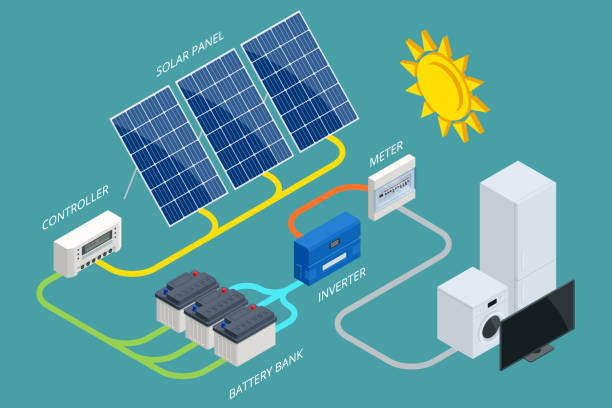Solar power systems are becoming more and more common, and you likely have several homes in your own neighborhood that have solar panels on their roofs. While those panels are a crucial component in generating solar power, there’s another piece of equipment that far fewer people know about: the solar inverter. What, exactly, does an inverter do in a solar power system? Keep reading to learn their primary functions, and you’ll see why they’re essential to getting solar power for your home.
Converting DC to AC
Did you know there are two types of electricity (at least, in general terms)? Those panels you see upon your neighbor’s roof convert sunlight into DC (direct current) electricity. While that’s a pretty remarkable conversion all on its own, it’s unfortunately not the only conversion that needs to happen. You see, your home’s lights and most of its electronics and appliances use AC (alternating current) electricity. And that’s where an inverter comes in.
In DC power, electricity is maintained by a constant voltage in one direction. AC electricity flows in both directions in the circuit, while the voltage changes from positive to negative. To convert DC to AC, an inverter effectively switches the direction of the DC input back and forth very rapidly. That DC input turns into an AC output, which is pushed out to your home for your use.
This is an inverter’s top job, and it’s central to being able to use that solar power your panels produce.
Feeding into the Grid
Getting your solar power production to exactly match your energy consumption is virtually impossible. If you’re like most people, you use less electricity during the day, when that power is primarily being produced, and need more electricity at night, after your panels will have stopped working. This imbalance is corrected by staying connected to the city grid for most people. Your inverter can feed the excess power into the grid during the day, then switch to grid power at night, so you have a continuous flow of electricity. As a bonus, most cities will credit you for any power you send to the grid, so even if you’re not using your power as it’s produced, you still reap the benefits of lower utility bills.
Charging Solar Batteries
This third function is optional, as not all solar power systems have battery banks. However, suppose you do use solar energy storage. In that case, your inverter will play the vital role of charging those batteries, then pulling power from them and converting it to AC electricity as you need it.
Solar inverters are vital to any solar power system. They are constantly at work—switching between power sources, redirecting the flow of electricity, and converting power, so it’s ready when you need it. Now you know why they’re just as crucial as those solar panels.

